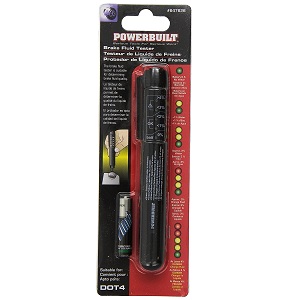
Without inherent rust prevention, a braking system would be at the mercy of water exposure, and its life span may quickly deteriorate if corrosion forms in the brake lines. Thus it is recommended to flush and replace brake fluid about every 2 years or 24,000 miles on average (you should check your owner’s manual for the specific interval recommended by the manufacturer of your car). Maintaining excellent brake fluid condition is important for all vehicles on the road, especially for performance automobiles with high end braking systems. The ability to spot check brake fluid moisture levels is a great way to stay ahead of the maintenance curve (and potentially save you some money over the long term) when it comes to car care. It is important to utilize a high quality brake fluid tester, as moisture content may vary depending on brake fluid type, performance design of the car, and driving environment. By dipping brake fluid testers into the top to the fluid reservoir, any car care enthusiast can use accurate real time information to decide when brake fluid needs to be changed.
For a long time, chemical test strips to measure moisture and mineral content in brake fluid were essentially standard. However, test strips can be expensive for initial investment, ranging from $80 – $100 per case. In addition, the strips must be disposed of after they have come into contact with highly corrosive brake fluid (which by the way you should not let drip onto your car’s paint!). In turn, a more modern method has recently emerged: a Light-emitting diode (LED) brake fluid tester that is accurate, inexpensive, and reusable.
Best Brake Fluid Tester


The overall quality of the Powerbuilt brake fluid tester is good, with battery life lasting longer than expected. The tester sports a small housing that is roughly the size of a ball point pen. It also has a cap to protect the probes from damage, ensuring reliable use over the long term.
As far as where to buy, Amazon’s attractive pricing makes their price tough to beat and as such, we’d recommend starting your search there. Overall, the Powerbuilt 647626 LED brake fluid tester is a great investment, and we think you’ll be very satisfied. Happy wrenching!
Click here to see more pictures, read more reviews, and see prices.
